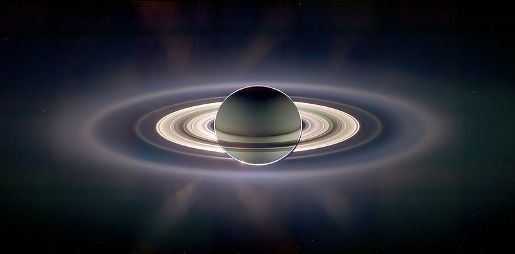 NASA’s Spitzer Space Telescope has discovered a large new ring circling the Solar System’s most spectacular planet, reports Ian Randall.
NASA’s Spitzer Space Telescope has discovered a large new ring circling the Solar System’s most spectacular planet, reports Ian Randall.
Geoscientist Online 5 November 2009
The new ring, which despite being the largest ever found orbiting a planet, is nearly invisible, was discovered in February when the Spitzer Telescope’s Multiband Imaging Photometer was used to scan the area around Phoebe, Saturn’s outermost moon. Diffuse peaks were detected in the 24µm and 70µm bands, coinciding with Saturn’s ecliptic plane. These measurements match the expected effect of seeing a ring of grains spreading out from Phoebe.
The ring is unusual both for its sheer size (its outer edge being 124 million kilometres from the planet’s surface) and in its retrograde orbit – the first ever observed. Most rings develop within a few planetary radii of their host body, where satellite formation is impeded by gravitational forces. More distant rings require continuous replenishment; Saturn’s E-ring (previously the record-holder for the largest known planetary ring) being fed by geysers erupting from the surface of Enceladus. The material forming the Phoebe ring is believed to be impact ejecta from the moon’s surface.
Simulations of the dust particles within the ring, carried out by a team led by Anne Verbiscer of the University of Virginia, have shown that at scales measured in tens of micrometers, the pressure exerted by solar radiation is the dominant force acting on the dust particles within the ring, distributing them evenly across the feature and causing them eventually to spiral inwards towards the giant planet. This lends support to another theory, concerning the peculiar colour variations seen on other Saturnian moons.